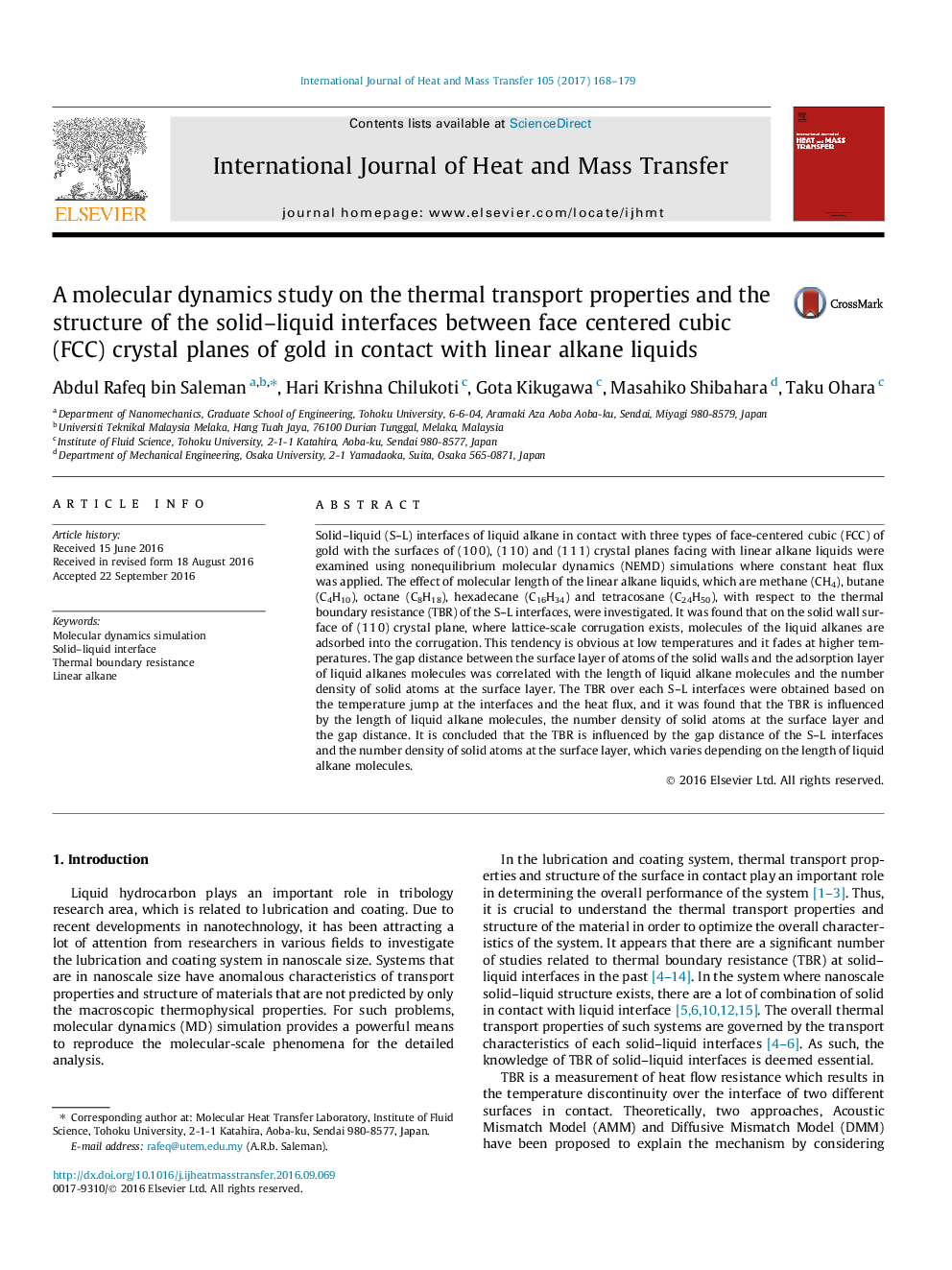| Article ID | Journal | Published Year | Pages | File Type |
|---|---|---|---|---|
| 4994680 | International Journal of Heat and Mass Transfer | 2017 | 12 Pages |
Abstract
Solid-liquid (S-L) interfaces of liquid alkane in contact with three types of face-centered cubic (FCC) of gold with the surfaces of (1Â 0Â 0), (1Â 1Â 0) and (1Â 1Â 1) crystal planes facing with linear alkane liquids were examined using nonequilibrium molecular dynamics (NEMD) simulations where constant heat flux was applied. The effect of molecular length of the linear alkane liquids, which are methane (CH4), butane (C4H10), octane (C8H18), hexadecane (C16H34) and tetracosane (C24H50), with respect to the thermal boundary resistance (TBR) of the S-L interfaces, were investigated. It was found that on the solid wall surface of (1Â 1Â 0) crystal plane, where lattice-scale corrugation exists, molecules of the liquid alkanes are adsorbed into the corrugation. This tendency is obvious at low temperatures and it fades at higher temperatures. The gap distance between the surface layer of atoms of the solid walls and the adsorption layer of liquid alkanes molecules was correlated with the length of liquid alkane molecules and the number density of solid atoms at the surface layer. The TBR over each S-L interfaces were obtained based on the temperature jump at the interfaces and the heat flux, and it was found that the TBR is influenced by the length of liquid alkane molecules, the number density of solid atoms at the surface layer and the gap distance. It is concluded that the TBR is influenced by the gap distance of the S-L interfaces and the number density of solid atoms at the surface layer, which varies depending on the length of liquid alkane molecules.
Related Topics
Physical Sciences and Engineering
Chemical Engineering
Fluid Flow and Transfer Processes
Authors
Abdul Rafeq bin Saleman, Hari Krishna Chilukoti, Gota Kikugawa, Masahiko Shibahara, Taku Ohara,
